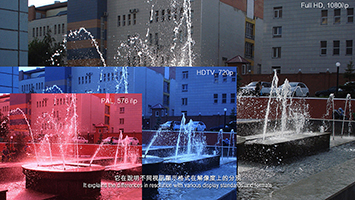

自動存檔:堡壘
Autosave: Redoubt
2018,互動式作品、改裝的電腦遊戲、特製聲音及視覺
Interactive artwork, modded computer game, customized sound and visuals
陸浩明+亞歷克斯.麥爾斯+彼得.倪爾森
Andrew LUK+Alexis MAILLES+Peter NELSON
陸浩明 美國 1988年生於美國新澤西的薩米特市,現於香港生活及工作
亞歷克斯.麥爾斯 法國 1978年生於法國拉洛歇爾,現於法國與東亞生活及工作
彼得.倪爾森 香港
Andrew LUK USA 1988 born in Summit, New Jersey, USA, now living and working in Hong Kong
Alexis MAILLES France 1978 born in La Rochelle, France, now living and working in France and East Asia
Peter NELSON Australia
《自動存檔:堡壘》為陸浩明、亞歷克斯.麥爾斯及彼得.倪爾森三位藝術家共同合作的電腦遊戲互動作品。作品採用二戰時期九龍半島與香港本島之間的地下堡壘及隧道空間為原型,重新於知名電競射擊遊戲「絕對武力:全球攻勢」伺服器中重現了一個擬實的地圖供玩家經驗與探索。
《自動存檔:堡壘》不存在於美術館中,只能在登入遊戲伺服器後,才能進入這個世界。在此件作品中,三位藝術家們企圖藉由建物空間的微妙個性,調查香港留下與日軍對抗的歷史與地理檔案,加之聲音及燈光設計,讓玩家在虛擬的空間中經歷真實的歷史場景,以遊戲地圖的創作傳達了對於部分香港二戰史的一些見解與觀點。其中,有趣的是,地圖和視野是電競遊戲中重要的戰略資源,玩家的操作過程就是一種對上述資訊掌握和調度的藝術。
進一步說,以3D電腦遊戲科技進行虛擬考古,這個計畫思考與爭辯科技不該被誤為真實或是中性的敘事方法,而需要被理解成一種帶有角度的模擬。遊戲是一種很特殊的商品形式,他的意識型態暗藏在3D所建成的空間中(空間規範了可能發生的事件)、情節的設計與推進及遊戲中的種種安置的視覺符號。這些統合起一個對於真實世界無論是在政治、經濟、信仰或文化形式上的想像角度。不同於平面畫作、錄像或電影,玩家必須大量的與遊戲中許多的角色和情節交會,雙向的交流形成一種更強力的沉浸感,或者反過來說,一種更有力推展隱藏的意識型態的利器。而此件作品重建這個歷史場景的過程中,遊戲作為一種介質的傳遞與溝通潛力,讓我們得以一窺藝術家設定的世界觀,探索過去歷史的密碼並提供他種持續性討論的機會。
Autosave: Redoubt is an interactive computer game work by artists Peter Nelson, Andrew Luk, and Alexis Mailles. The artwork employs an underground bunker and tunnel space between the Kowloon Peninsula and Hong Kong Island left in the World War II as the reference, and recreates a map close to reality on the server of the famous shooter video game “Counter-Strike: Global Offensive”.
Autosave: Redoubt does not exist in the museum. The visitor has to login the game server to gain access to this world. In this artwork, the three artists attempt to investigate the remaining historical and geographical documents against the Japanese Army in Hong Kong through the subtle characteristics of the compound space, along with sounds and lighting for players to experience the authentic historical scene in the virtual space, so as to convey their thoughts and ideas about a portion of the WWII history in Hong Kong via the creation of a game map. The interesting thing is that the map as well as the field of view is a vital strategic resource in the video game, while the maneuver of the player becomes an art of controlling and managing the aforementioned information.
More specifically, using 3D video game technology for virtual archeological endeavor, what the project contemplates and argues should not be misinterpreted as real or neutral narrative approach, but should be understood as a simulation with certain perspective. Game is a unique form of commodity with ideology hidden in a 3D-constucted space (that defines the possible events), plot design and progress, as well as visual symbols inserted into the game. All these together is an imaginary perspective to the real world, either in the forms of politics, economy, faith, or culture. Different from 2D paintings, videos, or movies, the player has to engage intensively with the multiple roles and plots in the game. The bilateral exchange yields a stronger immersive experience, or, in the other way around, a more powerful tool that promotes the hidden ideology. In addition, in the process of reconstructing the historical scene through the work, game as a medium’s potential to convey and communicate allows us to have a glimpse of the world view set by the artists as well as explore the codes in the history, and offers yet another opportunity to continue the conversation.







